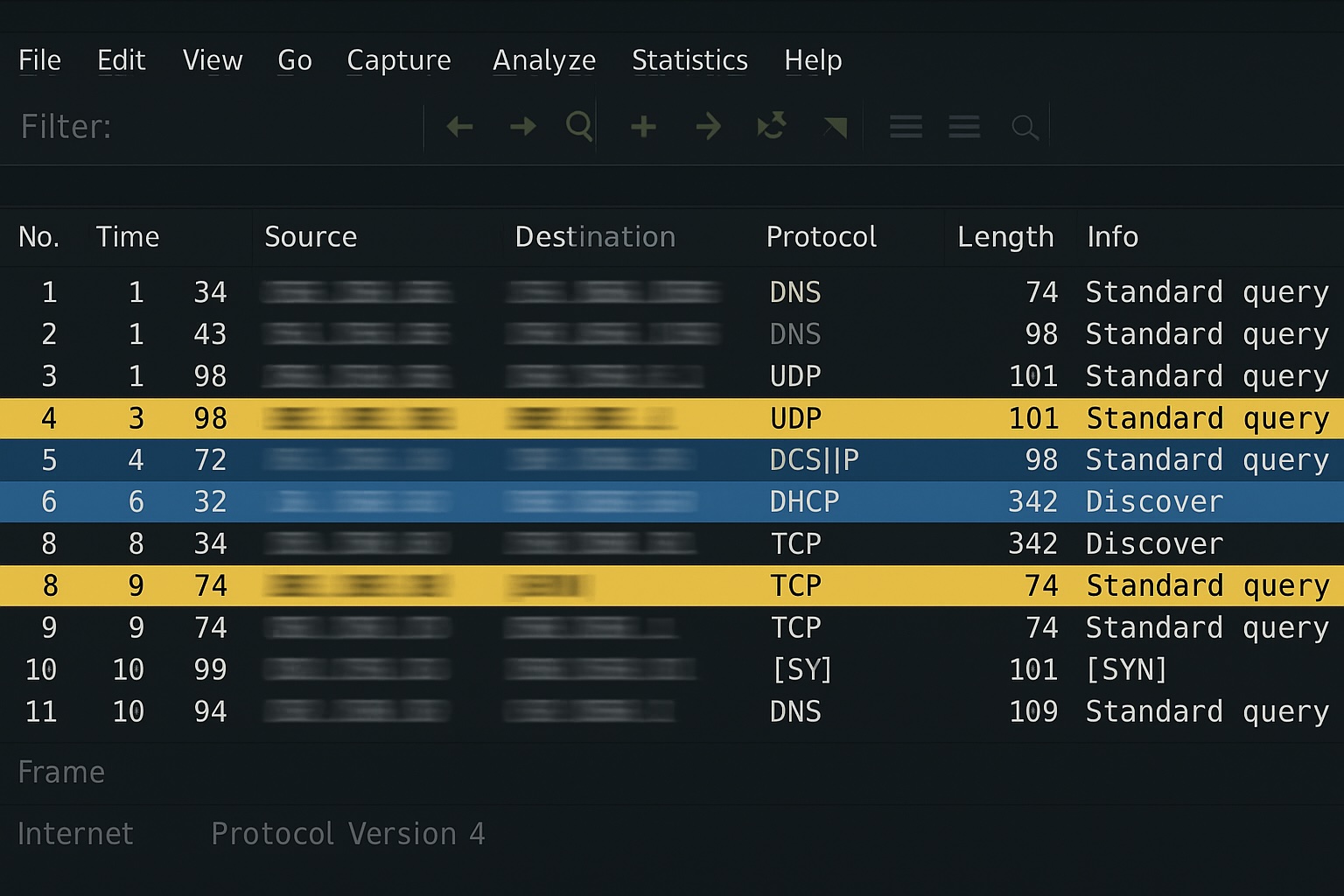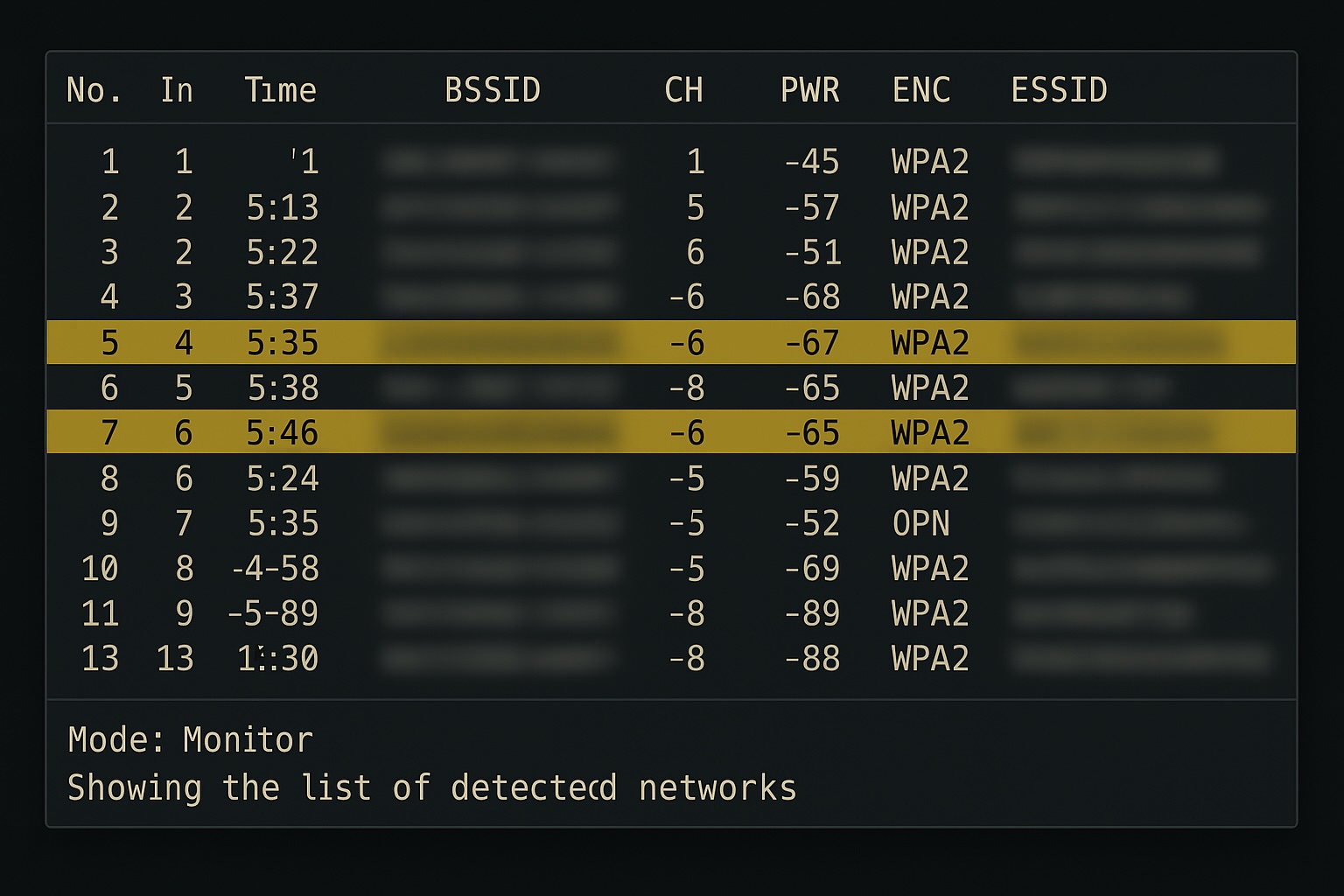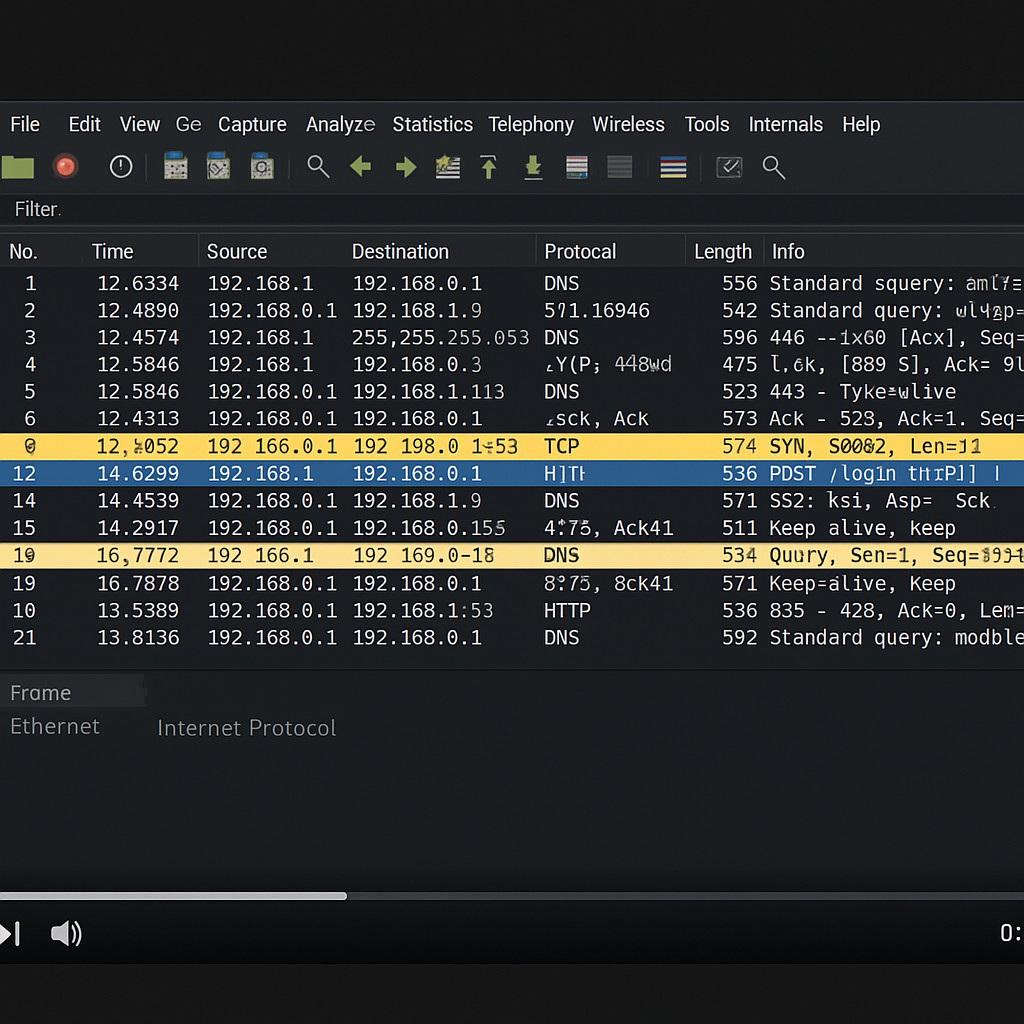
Francesco Demarcus : 11 November 2025 10:50
From the weaknesses of WEP to the advances of WPA3 , Wi-Fi network security has come a long way. Today, self-defending networks represent the new frontier: intelligent systems capable of detecting, blocking, and adapting to threats in real time. Discover how adaptive defense can make connectivity more secure, resilient, and aware.
After analyzing the risks associated with wireless network vulnerabilities in the first part , ” The Security Challenge in Wi-Fi Networks and an Adaptive Solution ,” this new in-depth study examines the evolution of security standards, from the fragile WEP to the modern WPA3. The article retraces the main milestones that have marked the progress of Wi-Fi encryption and introduces the concept of a self-defending network , a model capable of recognizing threats in real time, adapting to the context, and reacting autonomously.
Through practical examples and test cases, we demonstrate how adaptive defense represents the future of wireless cybersecurity today: a dynamic, intelligent, and indispensable approach to protecting communications in an increasingly connected world.
To address new Wi-Fi security challenges, a recent study proposes a self-defending network model that can quickly recognize attackers, block ongoing damage, and dynamically adapt to threat behavior.
The approach is based on a pre-connection detection mechanism, a preliminary phase during which data packets are analyzed for suspicious activity before the attack is even completed.
To demonstrate its effectiveness, the authors of the study simulated several breach scenarios, targeting well-known security protocols such as Wired Equivalent Privacy (WEP) and Wi-Fi Protected Access (WPA/WPA2) , using a common wireless adapter to test the network’s ability to react and defend itself.

Wireless network security has undergone a profound evolution, driven by the need to counter increasingly sophisticated cyber threats. From the fragile Wired Equivalent Privacy (WEP) to the more advanced Wi-Fi Protected Access III (WPA3) , each standard has represented a step forward in protecting wireless connections, attempting to address critical vulnerabilities and improve the overall reliability of networks.
Introduced in 1997, WEP was the first protocol designed to provide a minimum level of security for wireless communications through encryption and some access restrictions. However, its use of the RC4 algorithm and shared static keys quickly proved to be a serious limitation.
The system suffered from structural weaknesses: the encryption keys, not varying over time, made it easy to decrypt traffic; the initialization vector, which was only 24 bits long, was transmitted in the clear, allowing attackers to easily intercept it; and the repetition of the same IVs in heavily trafficked networks opened the way for packet manipulation to go undetected.
Tools like airodump-ng and aircrack-ng demonstrated how easy it was to crack a WEP network in minutes, effectively making it obsolete. Hence the need to develop a new generation of more secure protocols, such as Wi-Fi Protected Access (WPA) .
WPA was born in 2003, intended as a transitional evolution of WEP while awaiting a definitive standard. It introduced the Temporal Key Integrity Protocol (TKIP) , a more effective system for key management and data integrity.
WPA could operate in two modes: the Personal (PSK) version, based on a shared passphrase, suitable for home environments, and the Enterprise (EAP) version, which used a RADIUS server for centralized authentication in corporate environments. Encryption, increased to 128 bits, also represented an improvement over WEP.
Despite its progress, WPA inherited some weaknesses, particularly backward compatibility with older hardware and the inherent vulnerability of TKIP, which over time made it vulnerable to targeted attacks. It was clear that a thorough overhaul of the security model was needed.
In 2004, WPA2 arrived, the standard that marked a turning point. Its main innovation was the introduction of AES (Advanced Encryption Standard) encryption, which was much stronger than TKIP. This improvement made WPA2 the standard of choice for most home and business networks for over a decade.
The new standard provided stronger authentication and more efficient connection management, while maintaining broad compatibility with modern devices. However, even WPA2 was not immune to vulnerabilities: in 2017, the discovery of the KRACK (Key Reinstallation Attack) attack exposed a flaw in the four-way handshake, demonstrating that even the best-configured networks could be exposed to intrusion risks.
It was this event that pushed towards a further evolutionary step: the birth of WPA3 .
Introduced in 2018, WPA3 represents the most advanced level of Wi-Fi security, designed to address modern threats with a more robust and intelligent architecture. The main new feature is Simultaneous Authentication of Equals (SAE) , which replaces the old PSK system and offers much more effective protection against dictionary and brute-force attacks.
WPA3 also integrates individual encryption for each session and introduces Wi-Fi Easy Connect , a feature designed to simplify the secure connection of often vulnerable IoT devices.
The standard comes in three variants: WPA3-Personal , designed for home environments; WPA3-Enterprise , intended for the professional world with an even higher level of encryption; and Wi-Fi Enhanced Open , designed to improve the security of password-free public networks.
Despite its potential, WPA3 adoption is slow, hampered by compatibility issues with older devices and the costs associated with the transition. However, it represents the benchmark towards which all wireless networks will have to evolve.
Even supposedly robust protocols like WPA and WPA2 aren’t invulnerable if they’re not configured and managed properly. Many attacks rely on two fundamental steps: first, capturing the authentication handshake, and then attempting to crack the key using brute-force or dictionary attacks. In the first case, sniffing tools capture the packets exchanged during the four-way handshake that occurs when a client associates with an access point; in the second, the attacker uses dictionaries or powerful cracking engines to try millions of combinations until they find the correct password.
The capture-and-crack sequence highlights two recurring weaknesses: weak passwords and missing updates. Even well-established networks can be compromised if the passphrase is predictable or if the hardware firmware is out of date. For this reason, countermeasures must not be limited to protocol selection, but include credential management policies, device hardening, and continuous monitoring of network behavior.
The history of Wi-Fi vulnerabilities teaches us that security is never static: what works today can be circumvented tomorrow. For this reason, in addition to migrating to more secure standards like WPA3, it’s necessary to adopt a subjective approach to defense: networks that not only detect anomalies, but react and adapt. Self-defending networks aim to do just that: they continuously monitor traffic and behavior, recognize attack patterns, and apply automatic countermeasures to contain the incident and reduce operational impact.
In practice, a self-defensive network does not replace traditional controls, updates, segmentation, strong authentication, but complements them, offering faster detection capabilities and immediate responses that reduce the time window in which an attacker can operate.
Connected devices exchange data both via physical connections and radio frequencies; the access point (router) is the hub that mediates these communications and, therefore, the critical point to protect. Adaptive defense is a paradigm that constantly monitors the state of the network—which devices connect, how frequently, what traffic volumes they generate, and what communication patterns they follow—to quickly identify anomalies that could lead to an attack.
This approach combines preventive techniques (such as access policies and segmentation), investigative techniques (traffic analysis and collection of indicators of compromise), retrospective techniques (lessons learned from incidents), and predictive techniques (models that estimate future risk). The result is a multi-layered defense that updates over time, reducing the need for manual intervention and accelerating mitigation actions.
A self-defending network works like an organism in a constant state of alert. Every node, every packet, and every data stream becomes part of a digital nervous system capable of perceiving, reacting, and adapting.
Its operation is based on three fundamental principles: detection , containment and adaptation .
In detection, the network observes itself in real time, analyzing traffic not only after connection, but also in the pre-connection phase, when a device attempts the first contact. This is where the system’s intelligence comes into play: distributed sensors identify anomalous behavior, non-standard packets, or suspicious communication patterns. The goal is to detect the attack before it becomes an actual threat.
Containment is the immediate response. If an intrusion attempt is detected, the system can isolate the suspicious device, modify access policies, or temporarily reduce network privileges. It’s an automatic mechanism, similar to an immune response, that prevents the spread of damage and preserves business continuity.
Finally, adaptation. Here, the network learns from experience: it records events, updates behavior models, and refines detection rules. Each incident, analyzed retrospectively, becomes a building block in building a more effective defense.
In this way, the network evolves from a static system to a dynamic infrastructure , capable of improving over time and anticipating increasingly sophisticated attack strategies.
In short, a self-defending network doesn’t just “sound the alarm.” It reacts, corrects, and adapts. It blocks attackers’ access, redefines internal data traffic routes, and maintains control of the digital environment. It’s a model that combines automation and awareness, bringing cybersecurity to a level of responsiveness and precision that was unthinkable just a few years ago.

In today’s digital landscape, networks can no longer be limited to simple transmission infrastructures. They are the backbone of every economic activity, public or private, and their compromise can paralyze entire systems. The nature of the threats makes the picture more complex: no longer isolated attacks, but coordinated, automated campaigns that are often invisible until the moment of impact.
A modern network must therefore be able to react in real time , faster than the attacker. The traditional approach, based on static firewalls and post-event human intervention, is no longer sufficient.
Today, we need architectures capable of recognizing an anomaly, containing it, and adapting without disrupting service. Self-defending networks are born from this need. They integrate behavioral analysis techniques, artificial intelligence, and automation to protect the infrastructure the moment it is threatened.
The goal is not just to defend oneself, but to preserve operational continuity , ensuring that vital information flows remain uninterrupted even during an attack. In corporate and institutional settings, this resilience becomes a strategic requirement. It’s no longer a question of “if” an attack will occur, but of “how” the network will respond. Critical infrastructures, defense systems, and interconnected civilian networks must be able to self-diagnose and correct themselves autonomously, without waiting for human intervention.
Ultimately, network security is evolving from a passive function to an adaptive system . Self-defending networks embody this transformation: they observe, learn, and react like living entities, ensuring that the connection remains secure even when everything around them becomes uncertain.
Every cyber attack against a Wi-Fi network follows, with surprising regularity, a sequence of phases. Understanding them means being able to recognize the early signs of an intrusion and intervene before the damage is done.
Attacks almost never begin with a direct invasion: they begin with silent observation , a reconnaissance activity that aims to gather information invisible to the ordinary user.
It all starts here. The attacker analyzes the field, scans available networks, identifies access points, encryption types, and the MAC addresses of connected devices.
This seemingly harmless activity allows us to identify the most vulnerable targets.
Many open source tools such as airodump-ng or Kismet are used precisely for this phase, which precedes any access attempt.

Once the information is gathered, the attacker attempts to breach it.
It can use password dictionaries, brute force attacks, or exploit known vulnerabilities in authentication protocols (as happened with WEP or poorly handled handshakes in WPA2).
At this stage the target is the access key, the weakest point of the defense system.

If the attack is successful, the attacker gains access to the network. From there, they can move discreetly: intercept packets, exfiltrate data, manipulate communications, or turn the compromised device into a staging post for further intrusions.
This is the most insidious phase, because it often leaves no immediate traces: malicious traffic is confused with legitimate traffic.

The three phases show how thin the line is between normal network activity and digital aggression.
This is where adaptive defense comes in, capable of monitoring traffic in real time and distinguishing legitimate behavior from hostile action.
Only by anticipating these moves—and transforming the network into a system aware of its own dynamics—is it possible to block the attack before it reaches the final stage.
Adaptive defense represents the natural evolution of traditional cybersecurity systems.
It doesn’t just detect an anomaly: it interprets it, reacts to it and learns .
In an environment where attacks change in real time, the response must also be dynamic.
This strategy integrates four operational components:
In the self-defending network model, these four elements are not watertight compartments , but interconnected flows that communicate with each other in real time.
When a sensor detects an anomaly, the system starts a complete cycle: identification → action → learning → update.
In this way, every incident becomes a training opportunity for the network itself.
The behavior of a self-defending network can be represented as a continuous cycle:
This approach takes automation to the next level : the network is no longer just protected, but aware of its own security status.
In an enterprise environment, a device begins generating abnormal traffic to an unknown domain.
The adaptive defense system:
If a device exhibits similar behavior in the future, the network reacts even faster , having already “seen” that type of threat.
The goal is not only to reduce response times, but to maintain business continuity .
A self-defending network doesn’t interrupt service to respond to an attack: it limits it, neutralizes it, and continues functioning.
This balance between security and availability represents the real challenge of modern cybersecurity today.
A penetration test isn’t just “hacking” a network: it’s a controlled, planned, and authorized activity designed to assess the robustness of a network, identify real vulnerabilities, and provide practical mitigation recommendations. In professional security settings, a pen test provides the legitimate network owner with a snapshot of the risk level and a roadmap for intervention.
The pen test must answer specific questions: Which network components are exposed? What data can be intercepted or manipulated? How quickly can the network detect and contain an anomaly? The result isn’t a “grade” but an objective basis for improving resilience.
A penetration test must always be:
These constraints aren’t red tape: they protect the company, the testing team, and the end users.
The pen testing process is an iterative and documented flow. Typical phases are:
Choosing the right approach depends on the objectives: defense against external attacks, internal resilience, or in-depth verification of an architecture.
To make the test result operational it is important to measure and communicate:
A good report must be readable in two ways: an executive summary for decision makers and a technical section for operators. Key elements:
One test doesn’t cover all threats: external vectors, supply chains, or targeted attacks require different approaches. Furthermore, the quality of the test depends on the accuracy of the scope and the team’s experience: for critical infrastructure, it’s best to rely on certified providers with proven experience.
Wireshark is one of the most popular and powerful traffic analysis tools. It allows you to observe packets traversing a network in real time and understand how devices communicate with each other.
It is used daily by security analysts to detect anomalies, verify suspicious connections, or diagnose network problems.
A simulated sniffing test can start simply:
At this point, the interface displays thousands of packets with details such as the protocol, source and destination IP address, and connection status.
The user can apply filters to analyze only a certain type of traffic — for example http, dns, or tcp.port == 80 — and isolate what is of interest.
When traffic is not encrypted, sensitive information such as cookies, login parameters, or session data can be read.
For this reason, Wireshark is also a key tool for demonstrating the importance of using the HTTPS protocol and end-to-end encryption.
Practical example:
An analyst captures an HTTP session on an open network. In clear text, login parameters such as username=admin&password=1234 appear.
This experiment demonstrates how easy it is to intercept unprotected data and highlights the need for encrypted connections.
While Wireshark analyzes traffic when the connection is established, airodump-ng works in the previous phase: pre-connection .
It is the most used tool in wireless security testing to view all networks present in an area and monitor connected devices.
Its purpose is not to “attack”, but to observe.
By enabling monitor mode , a compatible adapter can intercept packets transmitted over the air, even if they are not intended for your computer.
This feature is useful for checking the robustness of a Wi-Fi network and identifying weak configurations.
Simulated example:
An analyst activates monitor mode on the adapter (wlan0mon) and runs the command:
sudo airodump-ng wlan0mon
After a few seconds, a table with the available networks appears:
If you want to focus the analysis on a specific network, just add the channel and BSSID:
sudo airodump-ng -c 6 –bssid AA:BB:CC:DD:EE:FF -w capture wlan0mon
The command generates a .cap file containing the captured packets, useful for subsequent testing or laboratory analysis.
It is important to remember that the use of these tools is ethically and legally permitted only for networks for which you have authorization or for controlled research purposes.
Wi-Fi networks operate on two main frequency bands: 2.4 GHz and 5 GHz. Both carry data via radio waves, but with significant differences in performance, coverage, and compatibility.
The 2.4 GHz frequency is the most widely used and provides the widest coverage, making it ideal for homes and spaces with physical obstacles. However, its widespread use also carries a greater risk of interference, as many common devices—such as microwaves, baby monitors, or inexpensive routers—operate on the same band.
From a security perspective, this band is also the most frequently exploited by attackers for sniffing or spoofing, precisely because of its accessibility. Analysis tools like airodump-ng tend to detect almost exclusively 2.4 GHz networks, unless the adapter explicitly supports higher frequencies.
The 5 GHz band offers faster transmission speeds and less congestion than 2.4 GHz, but at the expense of range. The shorter waves are quickly attenuated by walls and obstacles, making it more suitable for modern offices and open spaces. In return, it offers wider channels and reduced latency, essential features for real-time applications like streaming, gaming, or secure corporate networks.
From a security perspective, 5 GHz reduces the risk of random interference and limits the attack surface, but only if the hardware is up to date and compatible with the WPA2 or WPA3 standards.
Many wireless adapters built into laptops don’t support monitor mode, which is essential for security testing or analysis. This mode allows you to capture packets not intended for the device itself, a necessary feature for testing network robustness but also a potential source of abuse.
Professional network adapters, on the other hand, allow not only passive monitoring but also the selection of multiple channels and the detection of 5 GHz networks, thus ensuring more complete and reliable analysis.
In a security context, the choice of adapter directly impacts the quality of monitoring and response capability. Using tools that aren’t compatible with new frequencies or don’t support advanced modes reduces visibility and therefore the effectiveness of defense.
Proper management of Wi-Fi bands and the selection of compatible adapters are essential for a truly secure network. Scanning exclusively at 2.4 GHz risks leaving dead zones where an attacker could operate undisturbed. The goal, even for self-defense, is to achieve complete and dynamic spectrum coverage, integrating the speed of 5 GHz with the resilience of 2.4 GHz.
From the birth of the WEP protocol in 1997 to the widespread adoption of WPA3, Wi-Fi network security has undergone more than twenty years of transformation and vulnerability. Each evolution has arisen in response to a new threat: a continuous cycle of attack, discovery, and defense that has made cybersecurity a living and ever-changing discipline.
Today the challenge is no longer just to encrypt data, but to make networks capable of protecting themselves .
Self-defending networks represent this new frontier: systems that analyze traffic, learn from anomalous behavior, and react autonomously. Instead of waiting for an alert, they intervene in real time , isolate the risk, and adapt their security rules to address increasingly sophisticated threats.
Penetration testing, in this context, isn’t just a technical exercise: it’s how we measure a network’s maturity. It helps us understand how well the system can detect, block, and mitigate an attack before it compromises data or service continuity.
The transition to WPA3 and adaptive defense models is therefore not a point of arrival, but a step towards cognitive security : infrastructures that not only react, but learn , improve and evolve together with threats.
In a connected world where every device can be a potential entry point, true protection lies not only in technology, but in the ability to anticipate danger.
Modern cybersecurity is, ultimately, a two-speed race: that of the attacker and that of the network learning to defend itself.
Whoever can make them coincide will guarantee the stability of the digital future.
 Francesco Demarcus
Francesco Demarcus